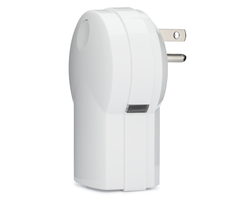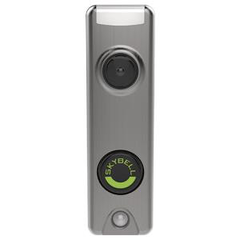Honeywell Home PROINDMV - Resideo's Promising Image Sensor Device
Posted By Michael GorisOne product that we have yet to discuss in great detail is the Honeywell Home PROINDMV Indoor Motion Viewer. This is a very promising accessory for PROA7PLUS users, especially those who are looking for a more affordable alternative to Honeywell IP Cameras and true video surveillance service.

If you are familiar with image sensors, then the Honeywell PROINDMV Indoor Motion Viewer is exactly that, plus a bit more. It is part of the Honeywell Home PROSIX Lineup of wireless sensors, so perhaps PROSIXINDMV would have been a more appropriate name. But nomenclature aside, this is a very handy and useful sensor for anyone with a PROA7PLUS Alarm System, especially if your monitoring plan doesn’t include video surveillance, and you are looking to keep your monitoring costs down.
You can think of the PROINDMV as a PIR motion detection sensor, combined with a video camera. It should basically be treated as an interior motion. If its PIR sensor is triggered while the PROA7PLUS System is Armed Away or Armed Night with the PROINDMV listed as active, the system will go into alarm, and the PROINDMV Camera automatically produces either a 10-second video clip or a still-motion image. The clip or image is made available at the PROA7PLUS Panel under the Camera Log, and it can also be seen on Total Connect 2.0. We expect that an update allowing the image or video clip to be automatically forwarded to the central station will be made available sometime in the not-too-distant future. The PROINDMV will also produce an image or video clip if its PIR is tripped during the Entry Delay Period, but in that case, the image or video clip will be held, and only sent out if the system isn’t disarmed in time and ultimately enters alarm.
The PROINDMV will only capture an image or video clip if it is triggered while the system is Armed Away or Armed Night, or in an Entry Delay Period. At this time, there is no way to request a manual “peek-in” like you can for Honeywell IP Cameras. However, we are hopeful that this feature will be made available in a later update. Anyone with access to Total Connect 2.0 can use at least one (1) PROINDMV. And if your TC2 account includes automation (Alarm Grid Silver Plan or higher), then you will be able to add up to eight (8) PROINVMD devices. Only the ten (10) newest clips or images are available, and they are automatically deleted after thirty (30) days. Images and clips can be sent via IP (WIFI) or cellular.
Overall, we think the Honeywell Home PROINDMV is a great product if you aren’t quite ready to make the leap to full video surveillance with Honeywell IP Cameras and an Alarm Grid Platinum Plan. The video camera records in 10 frames per second (FPS), so it isn’t anything too fancy. But it’s certainly good enough for verifying alarms and identifying suspects in a true break-in event. The PIR sensor covers more than 39 feet by 54 feet, with a 90° detection angle, making it suitable for large rooms in your home or business It even offers Pet Immunity for small animals weighing up to 80 lbs, provided that you follow the mounting guidelines. It will be nice for Resideo to finish making all the features available, as the lack of a “peek-in” is sorely missed. We also eagerly await the ability for clips and images to be automatically forwarded to the central station, as that is very important for alarm verification in certain jurisdictions.
You can purchase the Honeywell Home PROINDMV right now from the Alarm Grid website. Remember, this device only works with the PROA7PLUS ProSeries 7” All-In-One Panel from Resideo and Honeywell Home. We will be sure to keep you updated on this blog as new features for the PROINDMV are made available. We’re sure that Resideo has some great ideas in mind for this device, and looks to be promising sensor. If you have any questions about the PROINDMV Motion Viewer, or if you are interested in alarm monitoring services for access to TC2 so that you can get started with your own PROINDMV, send an email to support@alarmgrid.com. We’re here to check your email from 9am to 8pm ET M-F. We look forward to hearing from you!









